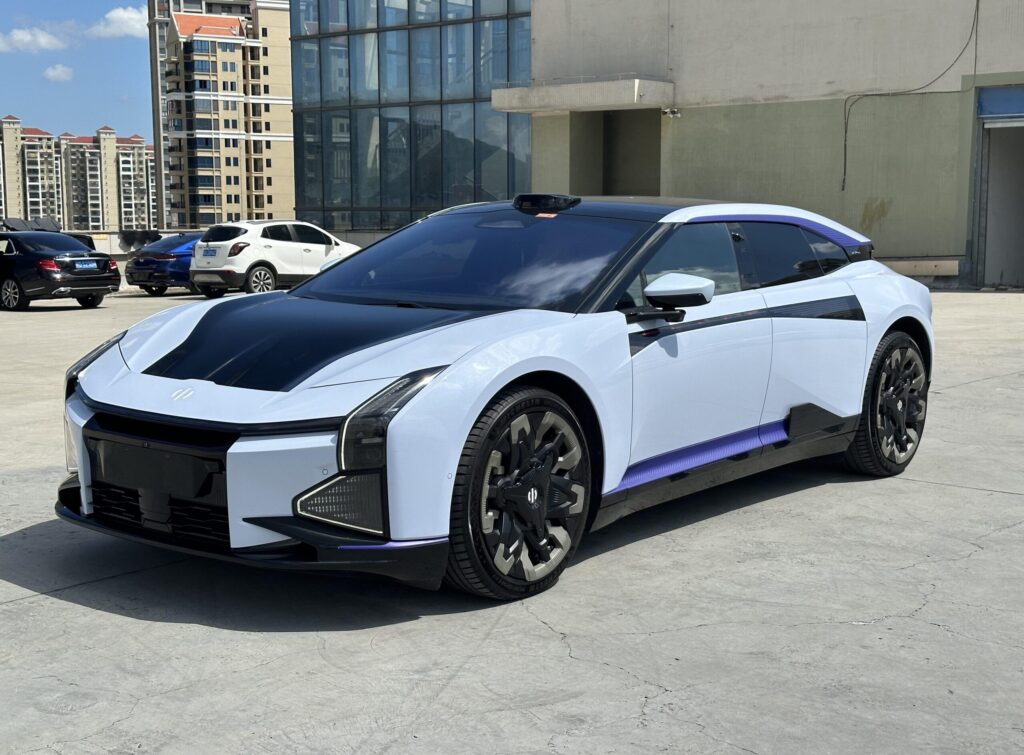$600 Million Rescue or Grand Illusion? The Spectacular Collapse of China’s HiPhi EV Dream

In the hyper-competitive world of electric vehicles, China’s HiPhi stood out. With its futuristic designs, breathtaking “wing-gull” doors, and six-figure price tags, it wasn’t just a car; it was a statement. Positioned as a direct challenger to Porsche and the Tesla Model S, HiPhi was the poster child for China’s high-tech automotive ambition.
But the party ended abruptly. Crippled by cash burn, the company halted production earlier this year, teetering on the edge of bankruptcy. Just when all seemed lost, a savior appeared: EV Electra, a Middle Eastern firm, rode in with a dramatic promise of a $600 million strategic investment.
Today, that promise looks more like a mirage. The rescue has stalled, the money hasn’t arrived, and the entire deal is on life support. Was this a simple negotiation failure, or was the grand rescue an illusion from the start?
The Missing Millions: Why the Deal Froze Over
The fairytale narrative shatters when you look at the numbers. The deal between EV Electra and HiPhi was troubled from its first chapter.
- The $50 Million Ghost Deposit: A crucial $50 million down payment, meant to signal commitment, was due by the end of May. As of July, it has never been wired. This was the key that was supposed to unlock the entire $600 million investment. It never turned.
- A Vote of No Confidence: To restructure, HiPhi needed at least 51% of its creditors to agree. It only managed to convince 37%. The reason? Creditors demanded that EV Electra provide a credible bank credit certificate to prove it actually had the funds. EV Electra failed to produce one.
The situation devolved into a stalemate: the supposed savior couldn’t prove it had any money, and the people owed money refused to trust a ghost.
Two Reasons the Rescue Was Likely Doomed
Looking deeper, this collapse was less of a surprise and more of an inevitability. The rot existed both outside and inside HiPhi’s walls.
1. The Investor’s Questionable Capital: The primary source of EV Electra’s funding was widely believed to be Saudi Arabia’s Public Investment Fund (PIF). However, recent reports suggest the PIF has paused its financial backing of EV Electra. This triggered widespread suspicion that the investment promise was made with money EV Electra didn’t yet have—and might never get.
2. Deep Mistrust in HiPhi’s Ability to Revive: Even if the money did arrive, creditors were deeply skeptical. HiPhi’s main production plant in Yancheng is idle, with a history of unpaid wages. There’s a stark difference between giving a patient a blood transfusion and trying to revive a corpse. Creditors feared that even a massive cash injection wouldn’t be enough to restart a factory that had already lost its workforce and momentum.
HiPhi’s Desperate “Plan B” Signals a Bleaker Future
With the EV Electra deal effectively dead, HiPhi’s management has scrambled to activate a “Plan B,” initiating talks with another Middle Eastern entity, NWTN.
But this is no cause for celebration. The offer from NWTN is reportedly $180 million lower than EV Electra’s proposal. This isn’t just a reduced number; it’s a brutal market verdict on HiPhi’s collapsed valuation. The company is no longer negotiating a strategic partnership; it’s holding a fire sale.
A Warning for the Global EV Market: The Party’s Over
HiPhi’s story is more than the failure of one company. It’s a flashing red light for the entire electric vehicle industry, particularly in China. The era of burning through capital on pure tech and hype, with little regard for sustainable business models, is coming to a violent end.
This is not just a Chinese phenomenon. From Rivian to Lucid, EV startups globally are learning the same harsh lesson: innovation doesn’t pay the bills. As the market shifts from hyper-growth to a brutal fight for survival, cash is king. The fall of HiPhi is a sobering preview of the great EV shakeout to come—a reminder that behind the futuristic designs and revolutionary promises, the old-world rules of business are making a savage comeback.
Source: Caixin, Yicai Global, and related creditor meeting minutes (June-July 2024).
My AI Jazz Project: